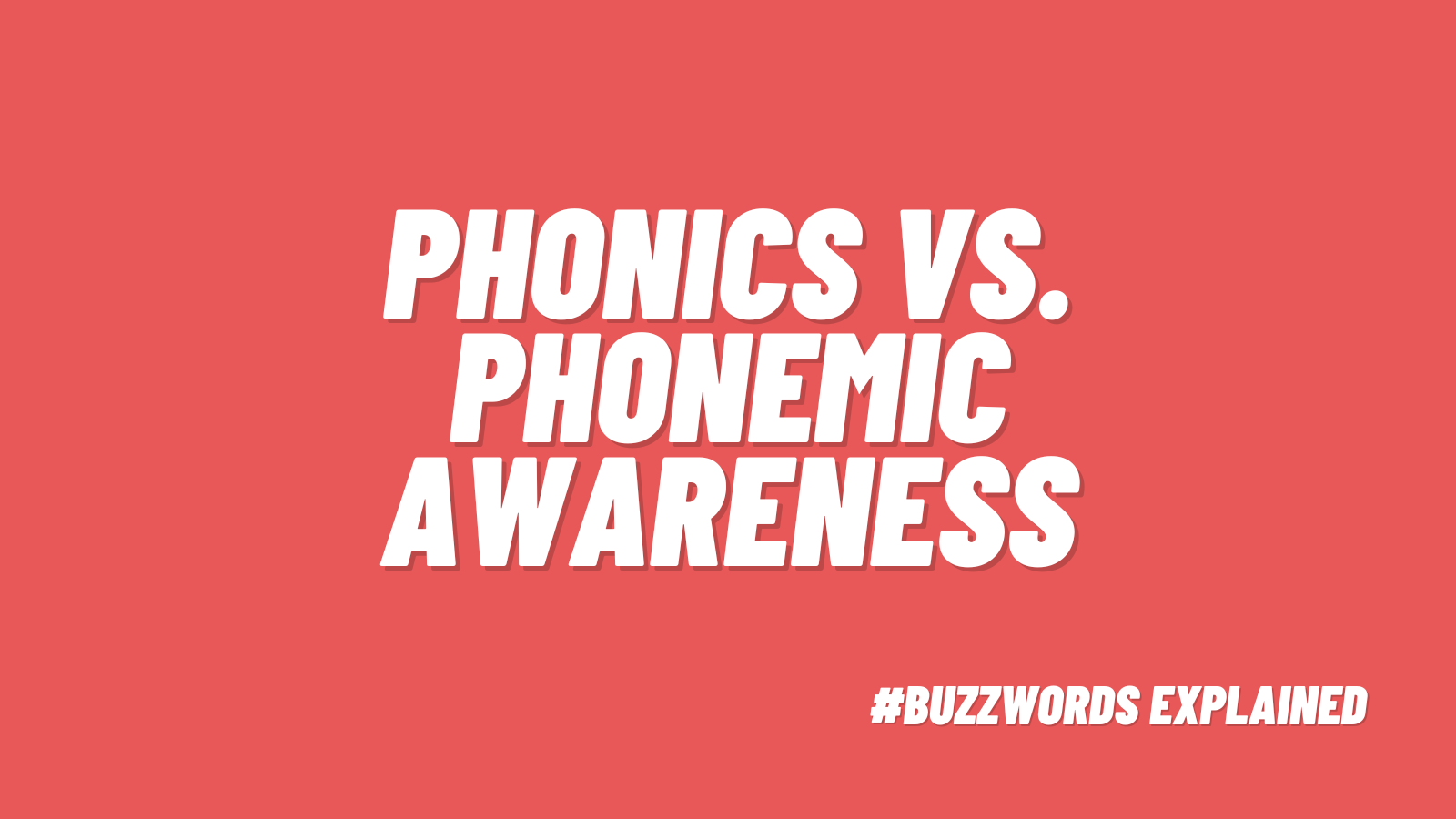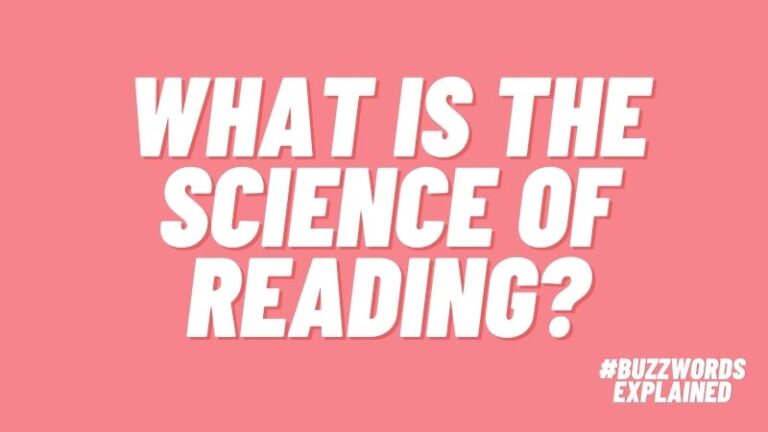The science of reading uses a lot of technical terms that aren’t always familiar: phonological awareness, phonics, phonemic awareness, decoding, and so on. It can seem overwhelming at first, but once you have a good understanding of what the various terms mean, you’re well on your way to becoming a better literacy instructor. Take a closer look at the differences between phonics and phonemic awareness, two of the most foundational reading skills.
Phonics vs. Phonemic Awareness in a Nutshell

People use the terms phonemic awareness and phonics interchangeably, but they are in fact two different things. In the simplest of terms, phonemic awareness focuses on hearing the sounds that make up words, while phonics is about putting those sounds into written letters. Most phonics instruction is written, while phonemic awareness lessons are oral.
Why are phonemic awareness and phonics important?
English is a complicated language, no doubt about it. Sometimes it seems like we have no consistent rules for spelling and pronunciation, making it impossible to learn efficiently. The truth is, the vast majority of English words do follow standard spelling patterns. In his 1966 book about phoneme-grapheme correspondence, Dr. Paul Hanna found that a whopping 84% of English words fit standard spelling and pronunciation patterns.
This finding led to the development of phonics, which emphasizes these standard spelling patterns in literacy instruction. Since standard spelling patterns also have standard pronunciations, phonemic awareness became an important part of the science of reading instruction too.
What Is Phonemic Awareness?
Spoken language is made up of individual sounds, known as phonemes, blended together. One way to think of phonemes is like LEGO bricks. These come in a variety of shapes, sizes, and colors, and can be put together to form all sorts of creations. Phonemes are the LEGO building bricks of spoken language, assembled in nearly endless ways to create words big and small.
Phonemic awareness is part of a bigger skill set known as phonological awareness. As we prepare kids to learn how to read, we begin by emphasizing sounds in general. For instance, we help them understand that speech is made up of words, which we combine into sentences. We note rhyming words and beginning sounds, and encourage them to clap their hands to hear how words break down into syllables.
Once young learners have a solid understanding that language is made up of individual sounds, we can teach them to recognize patterns in those sounds. Those patterns make up phonemes, and it’s vital that pre-readers hear the differences between them. Phonemic awareness is a critical auditory skill, one that equips students for success as they progress.
Learn more: What Is Phonemic Awareness? A Guide for Teachers and Families
How To Teach Phonemic Awareness
Phonemic awareness encompasses an array of skills and concepts, and there are lots of fun and interactive ways to teach them. These ideas can help you get started; take a look at our big list of phonological and phonemic awareness activities for more.
- Whole-Word Identification: Help kids hear individual words with silly sentences. Say a fun tongue twister, then ask them to repeat it while counting the individual words on their fingers.
- Syllabic Chunking: Use hand puppets to practice breaking words into syllables. For each new syllable, the puppet opens and closes its mouth, making it easy to hear and count the individual syllables in each word.
- Rhyming Words: Recognizing patterns becomes easier when you explore rhyming words. Pose puzzles like “I’m thinking of a word that rhymes with ‘wink.’” Offer clues like “You use it to wash your hands” to help lead kids to the right word (in this case, “sink”).
- Phoneme Isolation: Have kids look at their mouths in a mirror as they say words out loud and note the shapes their lips, teeth, and tongue make. Match these with various sounds, and they’ll start to see the patterns of phonemes jump out.
- Phoneme Segmentation and Blending: Break words apart into their constituent sounds by saying them slowly, tapping the table or stomping your foot for each individual sound. Then, reverse the process by slowly saying the sounds that make up a word (“/c/ /a/ /t/”) and asking kids to blend them together into the word.
Learn more: 40 Low-Prep Ways To Teach Phonological and Phonemic Awareness
What Is Phonics?
Take phonological/phonemic awareness and add written letters, and you’ve got phonics! This beloved (and time-tested) literacy instruction method teaches new readers that the relationship between letters and sounds is logical, predictable, and organized. Knowing these relationships helps students decode written words and learn to spell correctly.
In phonics instruction, you’ll often see phonemes written like this: /c/ /o/ /p/. These symbols break the words into their individual sounds. We start with the simplest sounds, then proceed to blends and vowel teams that have more complex spelling patterns, like /cl/ /ow/ /n/.
Of course, not all words follow standard spelling patterns, which is why phonics is just one part of the science of reading. We pair phonics with other skills like sight words to develop reading mastery. But ultimately, phonics is the major tool literacy instructors use to teach emergent readers.
Learn more: What Is Phonics? A Guide for Educators and Families
How To Teach Phonics
Phonics is a massive subject, with a variety of teaching methods and activities. Students begin learning phonics skills in preschool or kindergarten and continue throughout most of their elementary years. For phonics teaching ideas, check out our big roundup of phonics activities, including:
- Beginning Sounds Spoons: Grab some cheap plastic spoons and write a beginning letter or phoneme on each. Then, write a series of word endings on a piece of paper. Hold a spoon up to each, looking for matches that make real words.
- Phonics Pool Noodles: Cut pool noodles into chunks and write letters or phonemes on each. Thread them onto a rod to create words sound by sound.
- Vowel Teams Word Sort: Write a series of target words on note cards, then ask students to sort them by the vowel team they represent. Time them, then challenge them to beat their best score!
- Locks and Keys: Pick up a set of inexpensive padlocks with matching keys. Tag the locks with word endings and the keys with word beginnings. Students match them up to make correct words, and they’ll know they’re right if the key opens the lock.
Learn more: 44 Fun Phonics Activities and Games for Early Readers
Phonics vs. Phonemic Awareness: All Part of the Science of Reading
These two major skills are important parts of the science of reading, a body of evidence-based methods for literacy instruction. In combination with other skills like vocabulary, fluency, and reading comprehension, the concepts of phonics and phonological/phonemic awareness provide a structured way to teach reading to every student. Explore more about the science of reading and literacy instruction in these articles:
- What Is the Science of Reading?
- Essential Science of Reading PD Books for Teachers
- What Is Scarborough’s Reading Rope and How Do Teachers Use It?
- Effective Decoding Activities for Teaching Kids to Read
- Reading Fluency Is About Accuracy, Expression, and Phrasing—Not Just Speed
- What Is Reading Comprehension? Plus How To Teach It

